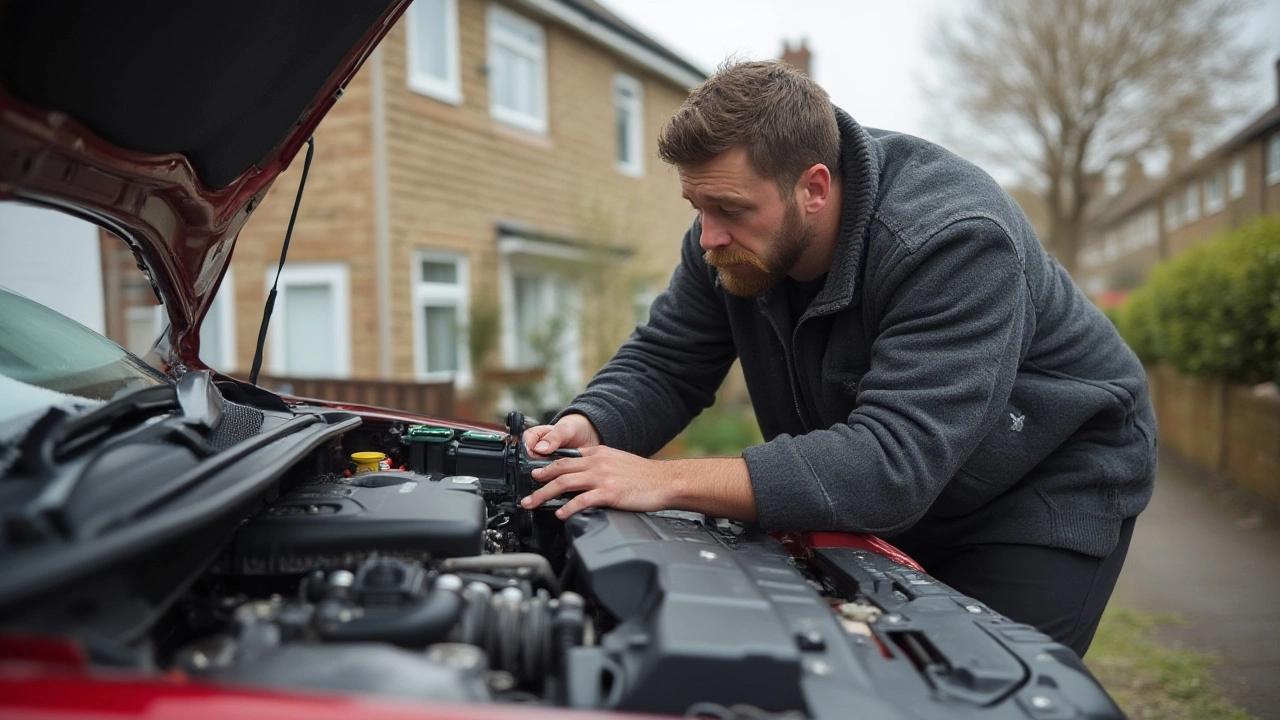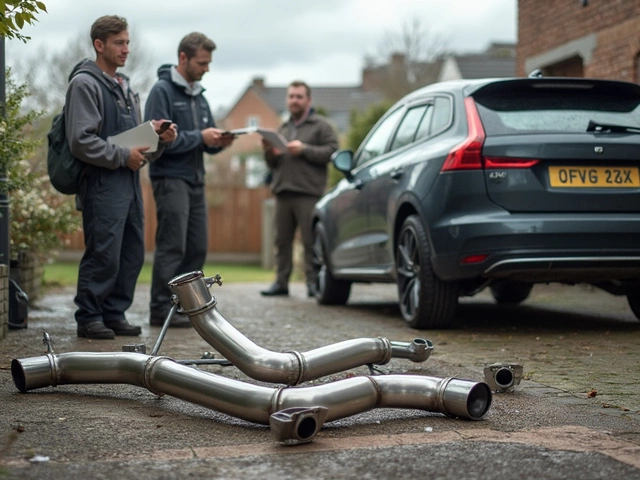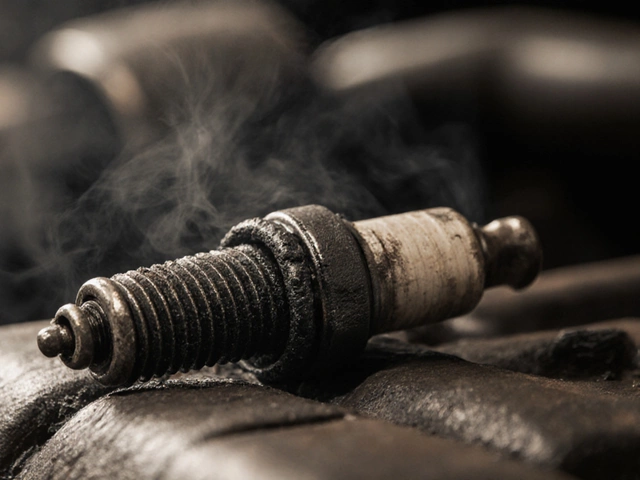Your engine coughs, your car sputters, and the dashboard suddenly blinks to life. If you’re like most drivers, the first thing you wonder is whether it’s just a random hiccup, or if your car is about to empty your wallet. Here’s the weird thing: sometimes, even when your fuel pump is on its last legs, your car’s computer won’t say a word. Not a peep, no code, nothing. Which leaves loads of folks stranded, scratching their heads in the lay-by, wondering if all those diagnostic codes are actually worth anything. So, does a bad fuel pump really throw a code? Let’s get straight into why it’s not as clear-cut as you’d hope.
How the Fuel Pump Works—and Why It’s Tricky to Diagnose
The fuel pump is one of those parts most people ignore—until their car conks out without warning. Basically, the job is simple: push petrol from the tank up to the engine, at the right pressure, every time you start, every time you accelerate. Sounds simple, but it’s doing loads of work behind the scenes. Modern cars rely on electric pumps—tucked inside the tank, humming away while you drive to the supermarket or smash it on the motorway. When everything goes right, you never notice it; when it fails, your whole day can stop.
Diagnosing a failing fuel pump is a bit of a nightmare, though. The trouble is, the fuel pump itself doesn’t have fancy electronics plugged onto it. It just sits there, sending fuel, with none of the sensors you might see on, say, the throttle or the oxygen sensors. So, if the pump’s working poorly or dying slowly, the engine control unit (ECU) isn’t getting a clear, direct signal saying, “Oi, I’m dying over here!”
That means when your car starts stalling, hesitating, or acting strange, you might get loads of codes about oxygen sensors, misfires, or running too lean—but not a code that says, “It’s the fuel pump!” This explains why so many people spend money fixing those other parts, not realising the true villain is hiding in the tank. That’s the big catch of modern diagnostics: it can’t spot everything, especially when it comes to the fuel pump itself.
Will a Bad Fuel Pump Throw a Code? The Honest Truth
This is the burning question: will a bad fuel pump throw a code? The honest truth is, not directly—not in most cars you see on UK roads today. Your car’s computer system can pick up on plenty of engine problems, but fuel pumps are hard to pin down. Here’s why:
- There’s no dedicated sensor for fuel pump health in almost all cars. The ECU only knows there’s a problem by noticing indirect things—like the engine running lean or showing up unwanted misfires.
- Even if the fuel pump is quitting, it’s usually not putting out a “code” of its own. You might get a trouble code for the mixture being off—P0171 (system too lean) shows up a lot, as does P0300 (random/multiple misfire detected). These don’t tell you outright that the pump is at fault.
- Some newer cars can get a little more clever. If the fuel pressure is way off—or if the car has a fuel pressure sensor—you might actually see a code related to fuel pressure, like P0087 (fuel rail/system pressure too low). That’s about as close as you get, and even then, it’s not the norm on most average cars in the UK built before the mid-2010s.
- If you have a standalone code reader and you’re hoping for a “smoking gun”—something clearly pointing at the pump—you’ll probably be disappointed.
The most common way people spot a dying fuel pump isn’t the code at all—it’s the miserable symptoms the car gives you. Weak acceleration, random engine stalling, engine cranking ages before it starts, and a wild, whining sound from the tank area are all classic signs. If you get a check engine light and it says “lean mixture” or “multiple misfires,” don’t bet against the fuel system itself. Especially if your car’s done over 60,000 miles or the pump’s never been swapped.
So, if you’re worried about your fuel pump, don’t just rely on the codes. You need to be a bit of a detective and pay attention to the way the car actually feels and sounds.

Spotting a Dying Fuel Pump—Symptoms, Sounds, and Quick Tests
Most folks just want their car to work without drama. But if you’re getting stuck on the hard shoulder or giving your starter motor a daily workout, chances are your fuel pump is trying to tell you something. The good news is, you don’t always need to be a mechanic to spot the warning signs.
- Bad fuel pump symptoms often creep in slowly. You might first notice it when the car struggles to start—especially on cold mornings. Eventually, you might get stuck at traffic lights, as the engine hesitates or stalls out of nowhere.
- If your car is surging—speeding up without you pressing the pedal—or acting as if it’s running out of fuel when you’ve just filled up, that’s a major clue.
- Listen for a strange, loud buzzing or whining sound coming from under the rear seat or close to the tank. A silent pump is a good one; a noisy one is almost always tired or clogged with muck from bad petrol.
- Loss of power on hills or motorway speeds is another classic tip-off. The engine just can’t get enough fuel under higher loads because the pump is lagging behind.
- Keep your nose open—sometimes a dying pump or bad gasket lets fumes seep out, or the engine runs rich and stinks up your exhaust.
You can do a handful of simple tests yourself. When you turn your key to the “on” position (before starting), you should hear the pump prime for a few seconds—a faint humming under the car. No noise? Could be a dead pump. If you’ve got a mechanic’s ear, a quick tap on the tank can sometimes start a dead pump (just enough to get you home), but that’s pure desperation mode, not a fix.
Fuel pressure testers are cheap enough—around £25-50 from your local parts shop. Plumb it into the fuel line (check your Haynes manual for where), and compare the pressure reading to your car’s spec. Anything far below normal means it’s time to start shopping for a new pump. Watch out, though: not every car is easy to hook up, and some modern systems are sealed tight.
If you’re still stuck, get a scan from a proper garage. Even if the code doesn’t point at the pump, a tech can read live fuel trims, test the pressure, and use their nose (and experience) to find what’s up. Don’t get suckered into replacing five other parts that the codes suggest—get the core system checked out first.
Tips to Prevent Fuel Pump Failure—and What to Do Next
Saving a fuel pump is all about not making things harder than they need to be. Here’s what really makes a difference:
- Don’t run your tank to empty on a regular basis. Low fuel means the pump isn’t cooled or lubricated properly, and sludge at the bottom can get sucked up, killing the pump early.
- Use good quality fuel whenever you can. Cheap, dodgy fuel from off-brand stations can bring grit or water into your tank, shortening your pump’s life.
- Replace your fuel filter at the schedule in your car’s manual—or every 20,000-30,000 miles. A clogged filter puts more strain on the pump.
- If you hear odd noises from the tank, don’t ignore them. Get it checked before it leaves you stranded. Stop driving if the car shows clear signs of fuel starvation.
- Watch out right after MOT or service—sometimes a disturbed connection or bumped wire (while working near the tank) can cause pump issues that weren’t there before.
When the pump does die, don’t just replace it blindly. Double-check the wiring, connectors, and relays first—these fail more often than you’d think. And make sure you get the newest compatible part; avoid eBay specials from unknown brands. A quality replacement will save you headaches and maybe even another embarrassing breakdown on the M60.
It’s also worth mentioning that a bad fuel pump can mimic loads of other problems—so don’t trust the codes alone, and don’t skimp on proper tests. Fuel pumps aren’t meant to last the life of the car—most give up after 80,000-120,000 miles, depending on how kindly (or not) you treat your tank. Bite the bullet, swap it out, and your engine will thank you. Sometimes, the best mechanic is curiosity—listen to your car, trust your instincts, and keep your tank at least a third full if you can.
So there you have it: don’t expect a failing pump to show up on your OBD2 scanner as neatly as you might hope. You’ll have to use your ears, eyes, and a bit of clever testing to get the real answer. Fix the root cause, not just the codes, and you’ll keep yourself off the hard shoulder for a good while longer.




